Discover the most famous historical landmarks in Siena to explore on your own, or to enjoy when on a shore excursion from the cruise to the port of Livorno
All shore excursions to Siena will take cruise visitors through a few important landmarks. Inevitably, time constraints on a guided tour do not allow a visit to all historical landmarks or even to have some of these pointed out.
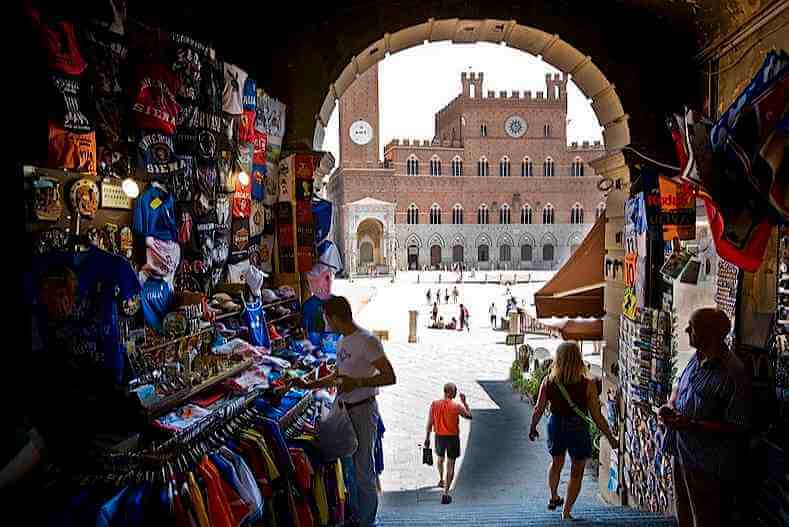
Arch entrance to the Piazza Del Campo
Photo: Jorge Royan CC-by-SA
Contents
- Piazza del Campo
- Palazzo Communale - Town Hall
- Piazza and Palazzo Salimbeni
- Palazzo Tolomei
- Palazzo Chigi-Saracini
- Loggia della Mercanzia
- Fontebranda
- Orto Botanico
- Fortezza Medicea
The good news is that tour guides always take cruise passengers to Piazza del Campo, one of the most spectacular squares in Italy and the World. However, if the cruise traveler decides to explore Siena independently, or on your own, you will be able to enjoy many of the Siena's landmarks.
1. Piazza del Campo
(Major Square)
The Piazza del Campo is such a popular spot for both tourists and locals that it is often referred to simply as “il Campo.” It is a huge sloping square that was originally 13th century marketplace, and is still the center of Sienese economic, social, and cultural events. Perhaps the most well-known event held in il Campo is the Palio horse races put on twice a year.
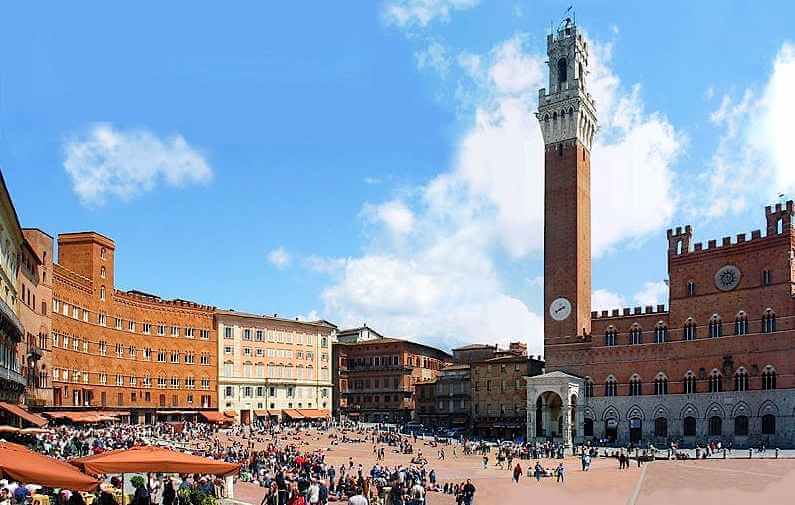
Siena - Piazza Del Campo
Photo by Manfred Heyde CC-by-SA
During the races, the piazza is crammed with crowds eager to get a glimpse of the horses as they round its outer edge. Even on a normal day, the piazza is filled with people out for a stroll, sightseeing, or enjoying lunch at one of the many restaurants. The major attractions in and around il Campo are the Palazzo Publico, Torre del Mangia, and the Fonte Gaia.
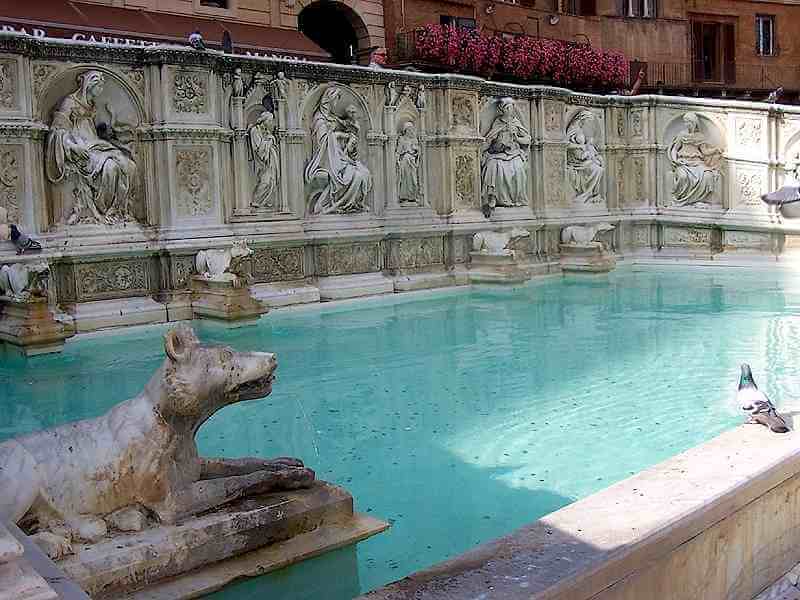
Fonte Gaia, Siena
Photo: Markus Mark CC-by-SA
2. Palazzo Communale/Publico
(Town Hall - Museum)
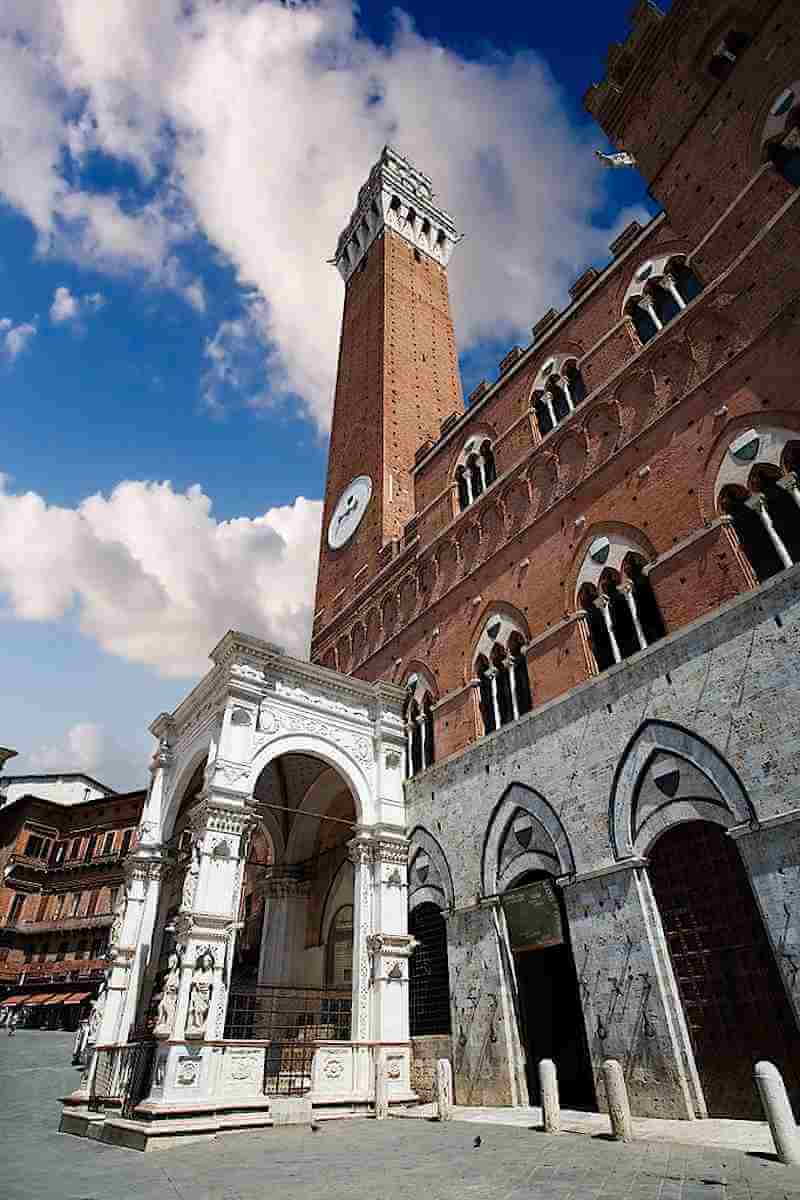
Siena - Piazza Del Campo
Photo by Jorge Royan CC-by-SA
The Palazzo Communale, or Palazzo Publico, is located at the bottom of the Piazza del Campo where it has stood since 1250. The Palazzo has been the seat of Siena’s Municipality since its construction. Today the building also houses the Museo Civico, which houses a wonderful collection of colorful frescoes throughout a series of hallways and rooms. Simply strolling around the Palazzo Communale’s ground floor courtyard is free, but visitors must buy a ticket to view the museum and the Torre del Mangia.
Torre del Mangia: The most famous (and photographed) tower in Siena, 330 feet high dominated the Piazza del Campo. The city’s municipality commissioned Francesco and Muccio di Rinaldo to design the tower and Maestro Agostino di Giovanni to build the tower in 1325. It was completed in 1348 right before the plague swept through the city. The Torre del Mangia is the tallest tower in Siena and the second tallest in Tuscany. Visitors can buy at ticket in the Palazzo Publico to climb to the top for a stunning view of the city.
3. Piazza and Palazzo Salimbeni
(Renaissance Revival)
The Piazza Salimbeni was not much to behold until 150 years ago when Giuseppe Partini completely redesigned it in the Renaissance fashion with a monument to Sallustio Bandini standing in its center. Bordering the piazza on one side is a 14th century Gothic Palazzo Salimbeni, which houses the Monte dei Paschi di Siena – one of Italy’s oldest banks.
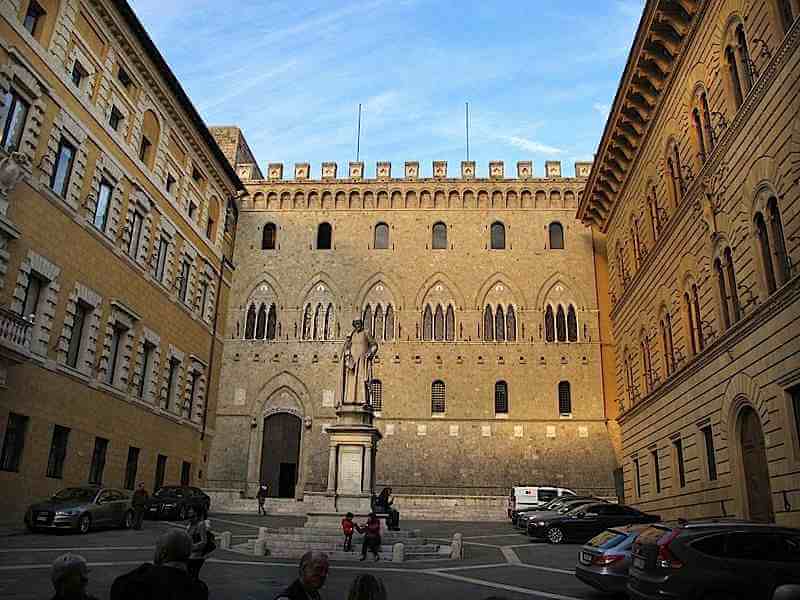
Siena - Palazzo Salimbeni
Photo by Sailko CC-by-SA
4. Palazzo Tolomei
(Siena Old Palace)
Built in 1205, the Palazzo Tolomei is one of Siena’s oldest palaces. The palace was rebuilt in 1267 after a large fire. It was owned by the Clique of the Tolomei, which was a power Sienese family that rivaled the Salimbeni family. Interestingly, both families had their palaces not far from each other, on Via Banchi di Sopra, on what are now the Piazza Tolomei and Piazza Salimbeni. Facing the Palazzo Tolomei, the Chiesa di San Cristoforo (Church of St. Christopher) is a site not to be missed.
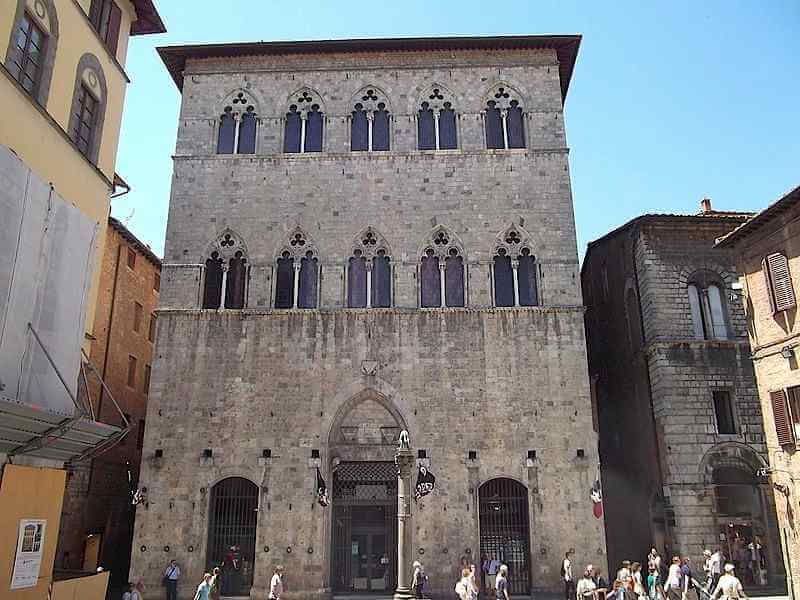
Palazzo Tolomei
Photo by Hermann Junghans CC-by-SA
5. Palazzo Chigi-Saracini
(Musical Palace)
The Palazzo Chigi-Saracini was built for the Marescotti family in the 12th century and used as the seat of Siena’s Municipality until the Palazzo Pubblico was built. The Piccolomini-Mandoli family bought it in the 16th century before it was passed to the Saracini family in 1770 and inherited by the Chigi family in 1877. It has housed the Accademia Musicale Chigiana since 1930.
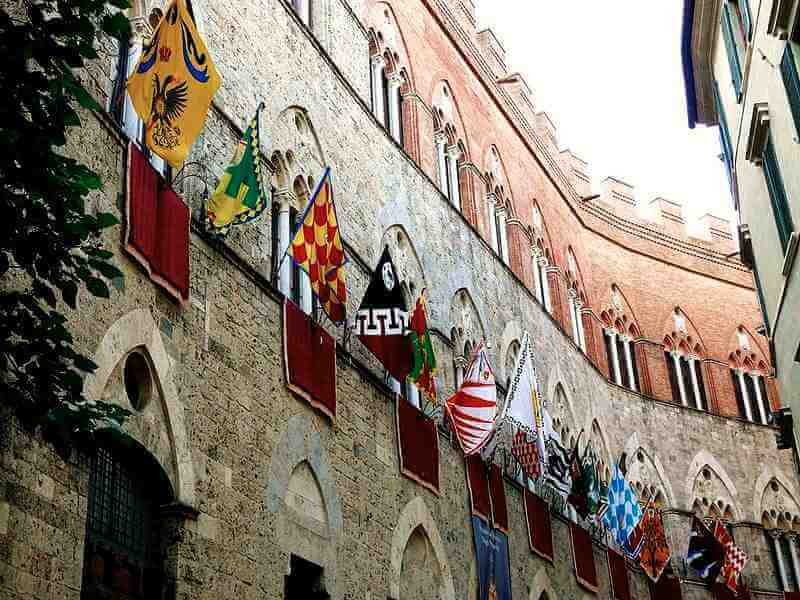
Siena - Palazzo Chigi Saracini
Photo by Steph Rocket CC-by-SA
6. Loggia dei Mercanzia
The Loggia dei Mercanzia is located near the Croce del Travaglio that was once the seat of the commercial court and now the home of the Circle of America. The bottom part of the structure was built in 1428 and the tabernacle was added in 1765.
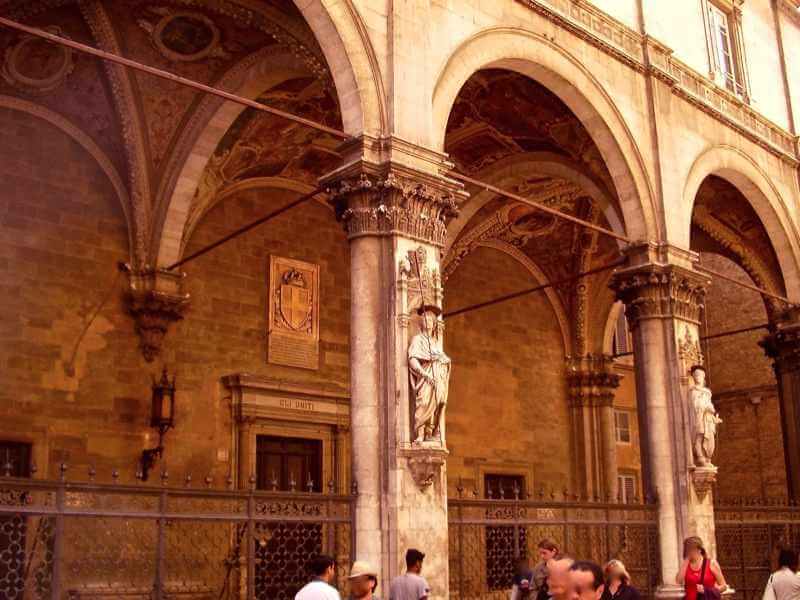
Loggia Mercanzia
Photo © IQCruising.com
7. Fontebranda
(Oldest Fountain)
Fontebranda is Siena’s oldest and most famous fountain. Not only is it mentioned in the 30th canto of Dante’s Inferno, it has provided enough water over the centuries to quench the Sienese people’s thirst and support numerous mill operations.
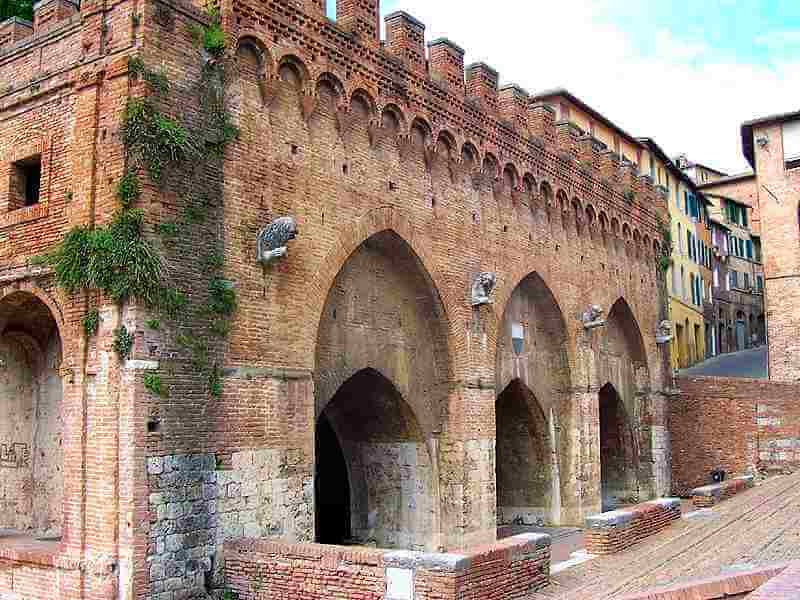
Siena - Fonte Branda
Photo by Markus Mark CC-by-SA
8. Orto Botanico
(Botanical Garden)
The Orto Botanico is a large botanical garden maintained by the University of Siena. It started out as the university’s medicinal herb garden in 1588, but became a collection of exotic plants in 1759. By 1784, the garden grew to over 1,000 plants representing about 900 species. Today the Orto Botanico features both plants found in Tuscany and those that are exotic to the region.
9. Fortezza Medicea
The well-maintained fortress dates back to the mid-16th century and rests on top of a grassy hill on the northwest which affords visitors a wonderful view of the city. Aside from the large grassy area on the interior of the fort, the Enoteca Italian is home to over 1,500 bottles of wine that can be sampled in its tasting room. The Enoteca shares space in the Fortress with the Siena Jazz School.





